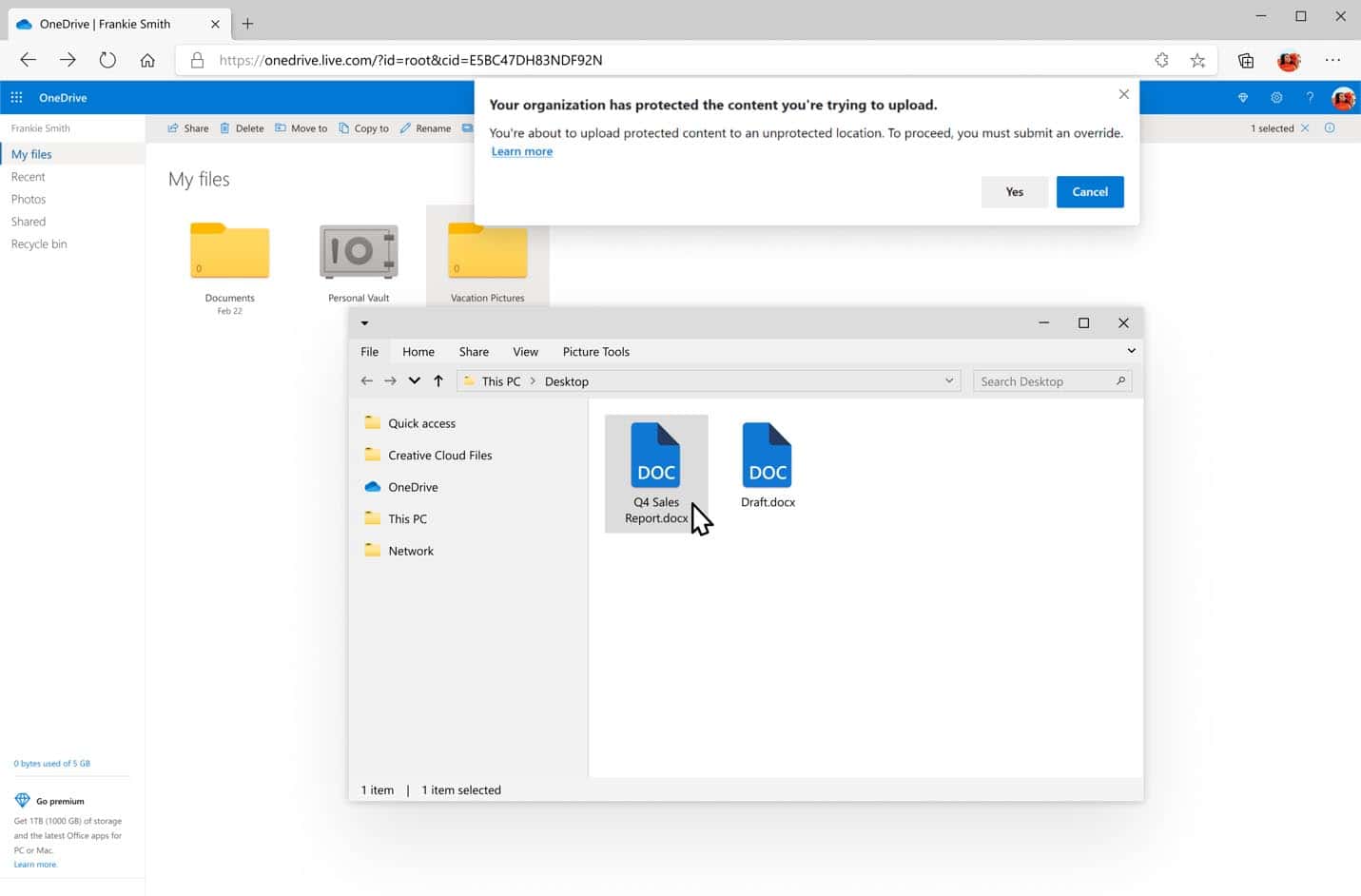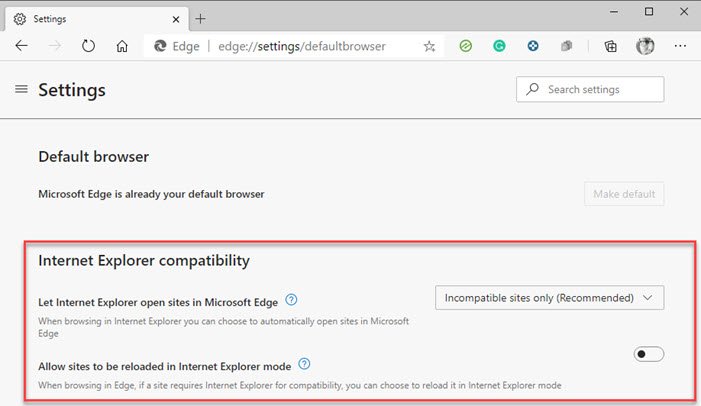Note
Policies to configure redirection to Microsoft Edge. Here is the list of policies that IT admin and users can configure to ensure the redirection happens. Nov 29, 2020 Beginning November 2020, users navigating to sites using Internet Explorer are being redirected to the new Microsoft Edge if it detects incompatibility. Initially, though the redirection is happening to a list of 1,156 websites, Microsoft is expanding the list to more number of sites.

This article applies to Microsoft Edge Stable version 87 or later.
Overview
Many modern websites have designs that are incompatible with Internet Explorer. Whenever an Internet Explorer user visits an incompatible public site, they get a message that tells them the site is incompatible with their browser, and they need to manually switch to a different browser.
The need to manually switch to a different browser changes starting with Microsoft Edge Stable version 87.
When a user goes to a site that is incompatible with Internet Explorer, they will be automatically redirected to Microsoft Edge. This article describes the user experience for redirection and the group policies that are used to configure or disable automatic redirection.
Note
Microsoft maintains a list of all sites that are known to be incompatible with Internet Explorer. For more information, see Request updates to the incompatible sites list
Redirection experience
On redirection to Microsoft Edge, users are shown the one-time dialog in the next screenshot. This dialog explains why they're getting redirected and prompts for consent to copy their browsing data and preferences from Internet Explorer to Microsoft Edge. The following browsing data will be imported: Favorites, Passwords, Search engines, open tabs, History, settings, cookies, and the Home Page.
Even if they don't give their consent by checking 'Always bring over my browsing data and preferences from Internet Explorer', they can click Continue browsing to continue their session.
Finally, a website incompatibility banner, shown in the next screenshot, appears below the address bar for every redirection.
The website incompatibility banner:
- encourages the user to switch to Microsoft Edge
- offers to make Microsoft Edge as the default browser
- gives the user the option to explore Microsoft Edge
When a site is redirected from Internet Explorer to Microsoft Edge, the Internet Explorer tab that started loading the site is closed if it had no prior content. Otherwise, the active tab view goes to a Microsoft support page that explains why the site was redirected to Microsoft Edge.
Note
After a redirection users can go back to using Internet Explorer for sites that are not on the Internet Explorer incompatibility list.
Policies to configure redirection to Microsoft Edge
Note
These policies will be available as ADMX file updates by October 26, 2020 and will be available in Intune by November 9, 2020.
Three group policies must be configured to enable automatic redirection to Microsoft Edge. These policies are:
- RedirectSitesFromInternetExplorerPreventBHOInstall
- RedirectSitesFromInternetExplorerRedirectMode
- HideInternetExplorerRedirectUXForIncompatibleSitesEnabled
Policy: RedirectSitesFromInternetExplorerPreventBHOInstall
Redirection from Internet Explorer to Microsoft Edge requires an Internet Explorer Browser Helper Object (BHO) named 'IEtoEdge BHO'. The RedirectSitesFromInternetExplorerPreventBHOInstall policy controls whether or not this BHO is installed.
- If you enable this policy, the BHO required for redirection will not be installed and your users will continue to see incompatibility messages for certain websites on Internet Explorer. If the BHO is already installed, it will be uninstalled the next time the Microsoft Edge Stable channel is updated.
- If you disable or don't configure this policy, the BHO will be installed. This is the default behavior.
In addition to needing the BHO, there is a dependency on the RedirectSitesFromInternetExplorerRedirectMode, which needs to be set to 'Redirect sites based on the incompatible sites sitelist' or 'Not Configured'.
Policy: RedirectSitesFromInternetExplorerRedirectMode
This policy corresponds to the Microsoft Edge Default browser setting 'Let Internet Explorer open sites in Microsoft Edge'. You can access this setting by going to the edge://settings/defaultbrowser URL.
- If you don't configure this policy or set it to 'Sitelist', Internet Explorer will redirect incompatible sites to Microsoft Edge. This is the default behavior.
- To disable this policy, select Enabled AND then in the dropdown under Options: Redirect incompatible sites from Internet Explorer to Microsoft Edge, select Disable. In this state, incompatible sites aren't redirected to Microsoft Edge.
Note
If you're on a personal device that isn't managed by your organization, you'll see another setting named 'Allow sites to be loaded in Internet Explorer mode' under Internet Explorer compatibility.
If you're on a domain joined or Mobile Device Management (MDM) enrolled device, you won't see this option.
Instead, if you want to let your users load sites in Internet Explorer mode, you can do so by configuring the policy Allow Internet Explorer mode testing.
Policy: HideInternetExplorerRedirectUXForIncompatibleSitesEnabled
This policy configures the user experience for incompatible site redirection to Microsoft Edge.

If you enable this policy, users never see the one-time redirection dialog and the redirection banner. No browser data or user preferences are imported.
If you disable or don't configure this policy, the redirection dialog will be shown on the first redirection and the persistent redirection banner will be shown for sessions that start with a redirection.
Note
User browsing data will be imported every time a user encounters a new redirection. However, this only happens if the user consented to the import on the one-time redirection dialog.
Disable redirection to Microsoft Edge
If you want to disable redirection BEFORE updating to Microsoft Edge Stable version 87, use the following step:
- Set the RedirectSitesFromInternetExplorerPreventBHOInstall policy to Enabled.
If you want to disable redirection AFTER updating to Microsoft Edge Stable version 87, use the following steps:
- Set the RedirectSitesFromInternetExplorerRedirectMode policy to Enabled AND then in the dropdown under Options: Redirect incompatible sites from Internet Explorer to Microsoft Edge, select Disable. This setting will stop redirecting as soon as the policy takes effect.
- Set the RedirectSitesFromInternetExplorerPreventBHOInstall policy to Enabled. This will uninstall the BHO after the next Microsoft Edge update.
See also
Microsoft Edge is Microsoft’s modern bet in the browser market, so Internet Explorer is just an old application with absolutely no future right now.
In other words, if you’re using Internet Explorer, you’d better start considering the switch to Microsoft Edge, as this is the only Microsoft browser that’s getting love these days.
Why Is Internet Explorer Opening Edge
The Redmond-based tech giant is trying to make the experience overall as straightforward as possible, and as part of its commitment to the new Edge, it also developed a way to automatically redirect Internet Explorer users to the new browser whenever an incompatible site is loaded.
Ie To Edge Bho
What this means is that Internet Explorer can now automatically launch Microsoft Edge if you point the browser to a website that doesn’t support it.
You must be running Microsoft Edge stable version 87 or later for the whole thing.
“Many modern websites have designs that are incompatible with Internet Explorer. Whenever an Internet Explorer user visits an incompatible public site, they get a message that tells them the site is incompatible with their browser, and they need to manually switch to a different browser,” Microsoft explains.
“The need to manually switch to a different browser changes starting with Microsoft Edge Stable version 87. When a user goes to a site that is incompatible with Internet Explorer, they will be automatically redirected to Microsoft Edge. This article describes the user experience for redirection and the group policies that are used to configure or disable automatic redirection.”
How the whole thing works is pretty straightforward. As noticed by BornCity, a support document published by Microsoft reveals that the company has created a list of all websites that are considered to be incompatible with Internet Explorer. When the browser detects that the user tries to load it, Internet Explorer checks to see if Microsoft Edge 87 is installed on the device. If it is, IE launches Microsoft Edge and loads the said page in the browser.

A notification is shown on the screen to let users know that the website they tried to load does not support Internet Explorer. Interestingly enough, once Edge is loaded, the browser also imports all browsing data from Internet Explorer, essentially preparing a full-time migration toe the new browser.
“On redirection to Microsoft Edge, users are shown the one-time dialog in the next screenshot. This dialog explains why they're getting redirected and prompts for consent to copy their browsing data and preferences from Internet Explorer to Microsoft Edge. The following browsing data will be imported: Favorites, Passwords, Search engines, open tabs, History, settings, cookies, and the Home Page,” Microsoft explains.
“When a site is redirected from Internet Explorer to Microsoft Edge, the Internet Explorer tab that started loading the site is closed if it had no prior content. Otherwise, the active tab view goes to a Microsoft support page that explains why the site was redirected to Microsoft Edge.”
While it’s pretty clear that the purpose here is to move users to Microsoft Edge, Microsoft explains that when you’re done with the incompatible page, you can just return to Internet Explorer for your browsing needs, as long as you load compatible websites.
Microsoft has also announced three group policies for IT admins that can be used to enable automatic redirection to Microsoft Edge:
- RedirectSitesFromInternetExplorerPreventBHOInstall
- RedirectSitesFromInternetExplorerRedirectMode
- HideInternetExplorerRedirectUXForIncompatibleSitesEnabled
Stop Redirecting From Explorer To Edge
The migration to the Chromium engine, the same one that’s powering Google Chrome and several other high-profile browsers, allowed Microsoft Edge to become a cross-platform offering. So in addition to Windows 10, Microsoft Edge can also be installed on Windows 7, Windows 8, Windows 8.1, and macOS. More recently, the Redmond-based software giant also released a preview build of Microsoft Edge for Linux, with the stable version expected in the coming months.
